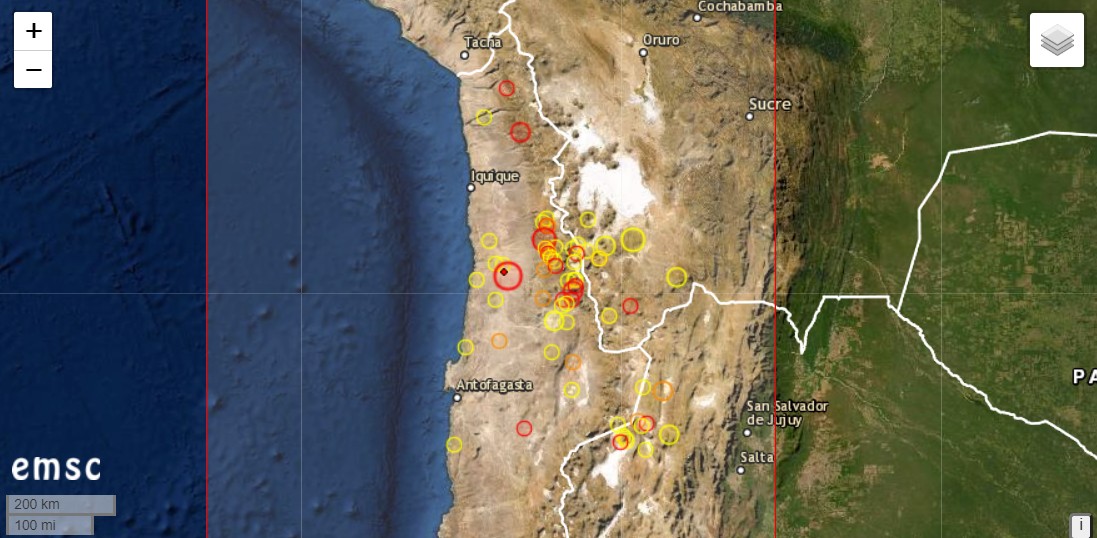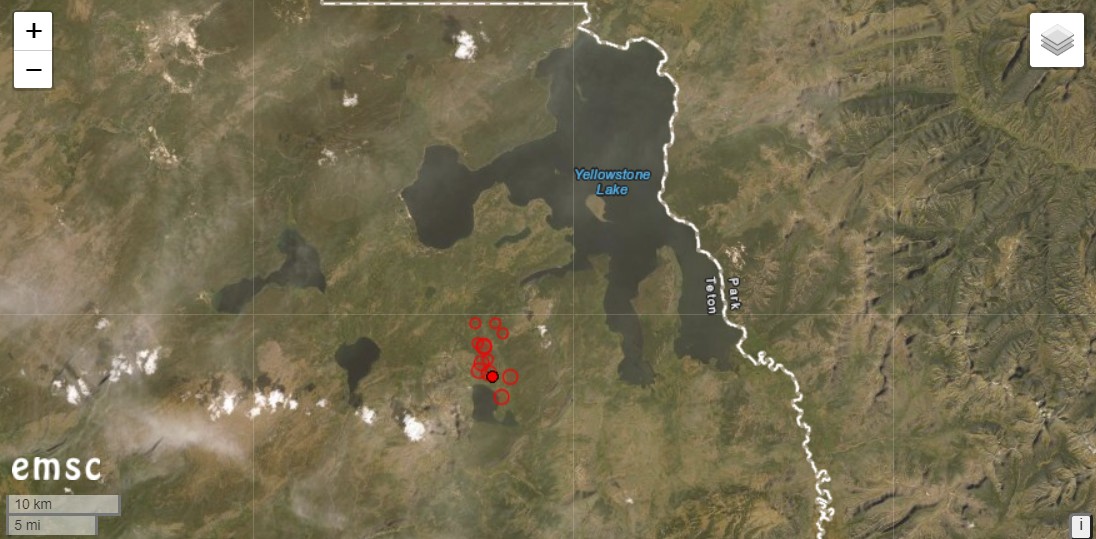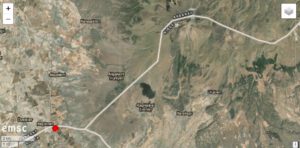 An unusual report from Turkey combines earthquake with volcanic activity. On Sunday, it shook in the border area of the provinces Aksaray and Niğde with a magnitude of 5.3. The epicenter was located 23 km northeast of Emirgazi. The epicenter of the earthquake was only 3 km deep. Almost 30 km northwest of the epicenter is the volcano Hasan Dağı. With a height of 3.268 m it represents the 2nd highest elevation of Central Anatolia. Videos make the round by the social media, which developed after the earthquake and show gas leaks. Apparently they are new fumaroles that have formed near the summit crater. A team of geologists will now take gas samples and analyze them. Gas eruptions occur repeatedly after earthquakes and need not be related to volcanism. On a volcano, however, one can assume that they are probably magmatic gases.
An unusual report from Turkey combines earthquake with volcanic activity. On Sunday, it shook in the border area of the provinces Aksaray and Niğde with a magnitude of 5.3. The epicenter was located 23 km northeast of Emirgazi. The epicenter of the earthquake was only 3 km deep. Almost 30 km northwest of the epicenter is the volcano Hasan Dağı. With a height of 3.268 m it represents the 2nd highest elevation of Central Anatolia. Videos make the round by the social media, which developed after the earthquake and show gas leaks. Apparently they are new fumaroles that have formed near the summit crater. A team of geologists will now take gas samples and analyze them. Gas eruptions occur repeatedly after earthquakes and need not be related to volcanism. On a volcano, however, one can assume that they are probably magmatic gases.
Earthquakes
News about earthquakes. The stronger events are edited manually by the author, but a part of the quakes are automatically detected and posted by the usgs.
Los Angeles: Earthquake Mw 4,5
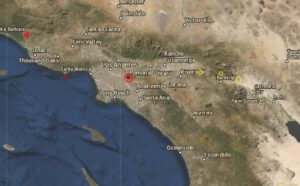 Yesterday morning, an earth tremor with a magnitude of 4.5 shook the greater Los Angeles area. The epicenter was 8 km east of Los Angeles. The depth of the epicenter was indicated by USGS as 18 km. According to the EMSC, the hypocenter was located at a depth of 20 km. In spite of the comparatively large depth of the focus, the earthquake was clearly perceived in the Los Angeles area. There are reports of small damages like cracks in house walls. Larger damages did not occur.
Yesterday morning, an earth tremor with a magnitude of 4.5 shook the greater Los Angeles area. The epicenter was 8 km east of Los Angeles. The depth of the epicenter was indicated by USGS as 18 km. According to the EMSC, the hypocenter was located at a depth of 20 km. In spite of the comparatively large depth of the focus, the earthquake was clearly perceived in the Los Angeles area. There are reports of small damages like cracks in house walls. Larger damages did not occur.
The earthquake manifested itself in the same fault zone as the 1987 Whittier Narrows earthquake, which had a magnitude of 5.9 and caused destruction in the city. The activated fault zone is the Puente Hills thrust fault, which is associated with the San Andreas Rift.
Translated with www.DeepL.com/Translator (free version)
Grimsvötn: Earthquake M 3.3
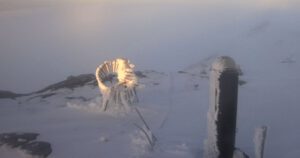 Tonight there was an earth tremor of magnitude 3.3 near Grimsvötn volcano. The epicenter was 11.1 km east of Hamarinn. The center of the earthquake was with 3.8 km relatively flat. Hamarinn is a subglacial volcano located in the west of the Icelandic glacier Vatnajökull and belongs to a system of crevasses that connects Grimsvötn and Bardarbunga. There have been 3 other weak earthquakes along the volcanic system.
Tonight there was an earth tremor of magnitude 3.3 near Grimsvötn volcano. The epicenter was 11.1 km east of Hamarinn. The center of the earthquake was with 3.8 km relatively flat. Hamarinn is a subglacial volcano located in the west of the Icelandic glacier Vatnajökull and belongs to a system of crevasses that connects Grimsvötn and Bardarbunga. There have been 3 other weak earthquakes along the volcanic system.
Since a few weeks an increase of seismic activity at Grimsvötn can be observed. Volcanic experts assume that the volcano is preparing for an eruption. Whether and when a volcanic eruption will occur cannot be predicted yet.
Chile: Earthquake Mw 6,3
Another strong earthquake occurred in the Chilean region of Atacama. It had the magnitude 6.3 and was located 88 km north-north-east of Tocopilla. The depth of the earthquake is 45 km according to the EMSC. The earthquake occurred at 07:36 UCT. In Chile it was 04:36 UCT and the people were rudely torn from their sleep.
In the same area there had been an earthquake of magnitude 6.8 on September 1. One can assume that the two earthquakes are related. There were further aftershocks.
Several potentially active volcanoes are located in the Atacama. The Lascar is one of them. It showed signs of awakening at the beginning of the year and emitted heat radiation. The geyser field near the Tatio volcano is worth seeing.
Yellowstone Caldera: Yellowstone Caldera: Seismic swarm
Under the US-American Yellowstone Caldera a seismic swarm is manifesting itself today. The strongest quake to date was M 2.9. EMSC indicates a total of 12 quakes with magnitudes greater than 2. The hypocenters are located at shallow depths of less than 5 km. The epicenters are concentrated in a small area southwest of Yellowstone Lake. They are located in the area of Heart-Lake and Mount Sheridan. The depression of the lake was formed by folding processes at a young fault zone. Therefore the swarm quake could be of tectonic origin. However, there is also a thermal field at the lake, so hydrothermal influences could come into play. The Heart Lake Geyser Basin is also known for its thermophilic archaebacteria, which occur here in a basic environment.
Central Mid-Atlantic Ridge: Earthquake Mw 6,6
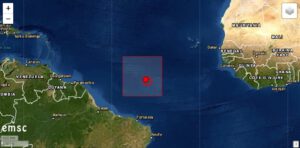 An earthquake of magnitude 6.6 occurred in the central region of the Mid-Atlantic Ridge, the epicenter of which was located between South America and Africa, more precisely 1218 km north of Acaraú in Brazil. The hypocenter was located at 10 km depth. Only last week there had been a strong earthquake in this region.
An earthquake of magnitude 6.6 occurred in the central region of the Mid-Atlantic Ridge, the epicenter of which was located between South America and Africa, more precisely 1218 km north of Acaraú in Brazil. The hypocenter was located at 10 km depth. Only last week there had been a strong earthquake in this region.
The border of several continental plates runs along the Mid-Atlantic Ridge. The submarine ridge is the birthplace of the Atlantic Ocean. Because of the divergence of the continental plates, they move apart and do not collide, as is the case in subduction zones. This causes less tension in the rock than at subduction zones and earthquakes occur less frequently.
Indonesia: 2 earthquakes on 18.08.20
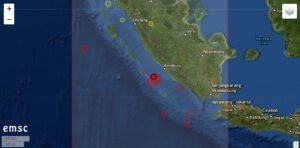 Two strong earthquakes shook the southwest coast of the Indonesian island of Sumatra. The quakes had magnitudes of 6.9 and 6.8 with hypocenters at depths of 39 and 10 km. The epicentres were 105 km and 132 km west of Bengkulu. More than 300,000 people live in the city. The quakes occurred in the early morning hours: the first quake manifested at 05.23 and the second one at 05.29. There are no reports of major damage and no tsunami alarm was given.
Two strong earthquakes shook the southwest coast of the Indonesian island of Sumatra. The quakes had magnitudes of 6.9 and 6.8 with hypocenters at depths of 39 and 10 km. The epicentres were 105 km and 132 km west of Bengkulu. More than 300,000 people live in the city. The quakes occurred in the early morning hours: the first quake manifested at 05.23 and the second one at 05.29. There are no reports of major damage and no tsunami alarm was given.
In relative proximity to the epicentres are numerous volcanoes, of which Kerinici and Anak Krakatau are currently the most active. Sinabung is located in northern Sumatra and a good 800 km away. However, the north of Sumatra was not spared by earthquakes either. Several earthquakes occurred in the area of 3. But these earthquakes might have been too weak to affect the Sinabung.
Philippines: Severe earthquake Mw 6,8
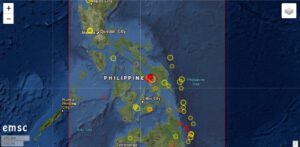 The Philippines were hit by a severe earthquake with a magnitude of 6.8. The hypocenter was located at a depth of 15 km. These data are from EMSC, PHILVOLCS gives the magnitude as 6.6 and the depth as 21 km. The epicenter was located in the Samar Sea. The strait is enclosed by the islands Samar, Leyte and Masbate. The nearest town was San Pedro, 20 km away.
The Philippines were hit by a severe earthquake with a magnitude of 6.8. The hypocenter was located at a depth of 15 km. These data are from EMSC, PHILVOLCS gives the magnitude as 6.6 and the depth as 21 km. The epicenter was located in the Samar Sea. The strait is enclosed by the islands Samar, Leyte and Masbate. The nearest town was San Pedro, 20 km away.
Although it was already a relatively strong earthquake, the damage seems to be limited. This is probably due to the rather great depth of the earthquake’s focus. According to media reports, a family was trapped in their collapsed house. Cracks were discovered on several bridges and in streets. However, the great catastrophe did not occur.
There were (and still are) numerous moderate aftershocks. Most of them have magnitudes in the range of 3.
Strong earthquakes can influence volcanoes in their eruptive behaviour. In fact, there are reports in social media according to which the Taal volcano, a good 400 km away, reacted to the quake with increased steam emissions. Images are circulating with a steam cloud several hundred meters high above the volcano crater. The volcanologists of PHILVOLCS report only a 20 m high steam cloud, as it has been standing over the volcano almost constantly since the end of the eruption in January this year. The cloud in the pictures is called a meteorological cloud. For this, the nearby Mayon volcano probably actually emits a steam plume. Instead of ascending 200-500 m as usual, it reached a height of 750 m today. A volcano-tectonic earthquake was recorded. At Taal Volcano, the number of quakes rose from 2 to 5.
In general, it is probably too early to estimate whether the earthquake will have a lasting effect on the behaviour of the volcanoes. I do not see any signs of an imminent eruption.
Bali: Earthquake south of the island
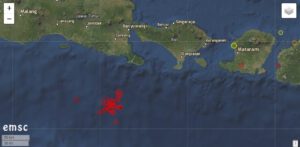 Yesterday an earthquake of magnitude 5.1 manifested itself off the southern coast of the Indonesian islands of Bali and Java, with the hypocenter at a depth of 56 km. The earthquake triggered a series of aftershocks, which were at a much lower depth of 10 km. Most of the aftershocks have magnitudes in the range of 3. The earthquakes are associated with the subduction along the Sundab Arc and are not directly related to the volcanism in the region.
Yesterday an earthquake of magnitude 5.1 manifested itself off the southern coast of the Indonesian islands of Bali and Java, with the hypocenter at a depth of 56 km. The earthquake triggered a series of aftershocks, which were at a much lower depth of 10 km. Most of the aftershocks have magnitudes in the range of 3. The earthquakes are associated with the subduction along the Sundab Arc and are not directly related to the volcanism in the region.
A few hundred kilometres further east, similar events occurred in the Sumbawa region. Here, too, numerous earthquakes reduce stresses in the earth’s crust, which are caused by subduction along the Sunda Arc. It can be assumed that there are also tensions in the area between these two spots waiting to be relieved. At any time strong earthquakes can occur at the Sunda Arc, which could even trigger tsunamis.
USA-Alaska: Earthquake Mw 7,8
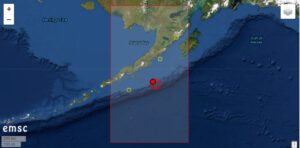 This morning a strong earthquake of magnitude 7.8 manifested itself off the coast of Alaska. The hypocenter was at a depth of 17 kilometers. The epicenter was located 84 kilometers south of Perryville. A tsunami alarm was sounded. People on the coast of Alaska and the Aleutian Islands were asked to go to higher ground. The data is from the EMSC and may still be subject to change.
This morning a strong earthquake of magnitude 7.8 manifested itself off the coast of Alaska. The hypocenter was at a depth of 17 kilometers. The epicenter was located 84 kilometers south of Perryville. A tsunami alarm was sounded. People on the coast of Alaska and the Aleutian Islands were asked to go to higher ground. The data is from the EMSC and may still be subject to change.
Strong earthquakes could effect nearby volcanoes. A few kilometers north of Pennyville is Mount Veniaminof. The volcanoes Mount Pavlof and Mount Chiginagak are also located around the epicenter.
